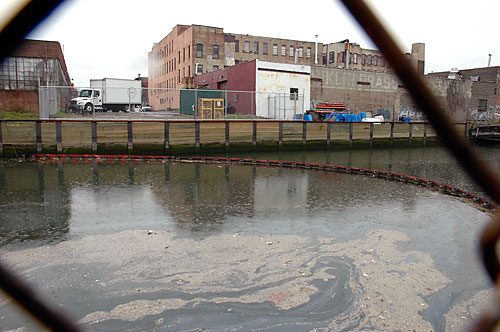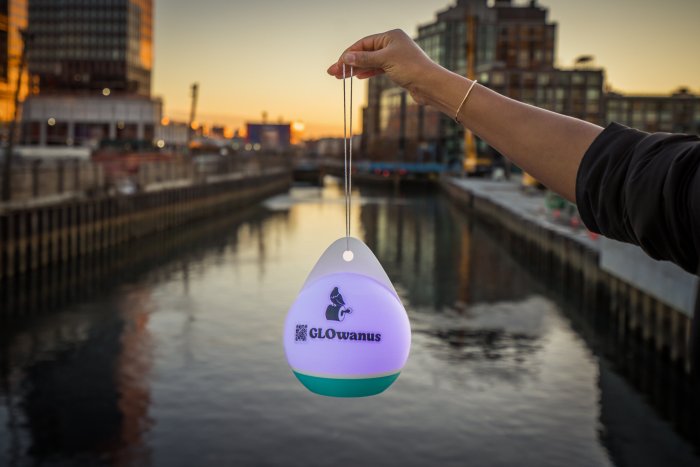Time to take Gowanus crabs off the menu!
The Environmental Protection Agency confirmed today what everyone already suspected about the Gowanus Canal — the beleaguered waterway is rife with a stew of cancer-causing chemicals and toxins that can endanger humans, animals, and the environment.
The not-so-shocking results are the first phase of a federal investigation into just what makes the 1.8-mile waterway so fetid, and, more important, where the gunk is coming from.
The study is a precursor to the eventual $500-million clean-up of the canal, which was named a Superfund site last year.
“The contamination … is widespread and may threaten people’s health, particularly if they eat fish or crabs from the canal or have repeated contact with the canal water or sediment,” EPA Regional Administrator Judith Enck said on Wednesday morning.
And, by the way, swimming is out, Enck added.
“The level of contamination is so severe that I don’t feel comfortable saying that when we’re done, it will be fishable or swimmable,” she added.
The waterway continues to suffer, with “uncontrolled discharges of sewage, storm water and other types of discharges into the Gowanus continue to contaminate the canal,” something quite familiar to YouTube watchers who remember the fecal tsunami last year.
The agency will next review a range of options to clean the canal, transforming it — well, after a decade or more of remediation — into “a revitalized urban waterway,” Enck promised.
Before any work begins, debris in the canal — including newly discovered sunken vessels at the Fourth Street and Sixth Street basins — will have to be removed, and the bulkheads strengthened to prevent collapse.
The months-long investigation found the widespread presence of more than a dozen contaminants, including two suspected carcinogens: polychlorinated biphenyls, once used as coolants and lubricants in transformers, and polycyclic aromatic hydrocarbons, formed during the incomplete combustion of coal, oil, wood and garbage. Various metals, including mercury, lead and copper, were also detected at high levels in the canal sediment.
Officials said that people who come into regular contact with canal water could be at risk to exposure to polycyclic aromatic hydrocarbons.
Contaminants were found in the air, but not at a level that presents “an unacceptable risk,” to humans, the agency stated.
Marine animals that are somehow living in the muck are getting the toxic shaft as well, according to a study of some over 200 fish and crustaceans, including striped bass, eel, white perch and blue crab.
And birds such as herons and ducks that eat canal fish are also at risk.
The study also revealed the three “hot spots” of contamination, sites where 90 percent of the waterway’s woes originated. The locations, reported here last year, are where manufactured gas plants once stood: Metropolitan Works, at 12th Street and the canal; Fulton Municipal Works, at Degraw Street and Third Avenue; and Citizens Gas Company, at Smith and Fifth streets. The trio once fueled the Industrial Revolution — but leeched the by-products of progress into the canal.
The draft report is available for public review online at www.epa.gov or in person at the Carroll Gardens Library [396 Clinton St. between Sackett and Union streets, (718) 596-6972)].
The EPA will hold a public meeting to discuss the findings at PS 32 [317 Hoyt St. between Union and President streets in Carroll Gardens, (877) 251-4575], Feb. 23, 6:30–9 pm.




















